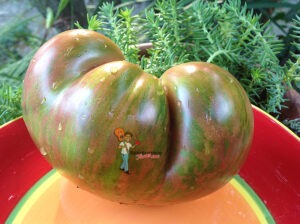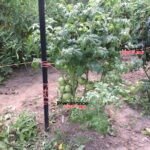Some Facts About Dwarf Tomatoes
Each year, I have a blast growing dwarf tomatoes. In 2017 we grew about 45 varieties of all different sizes shapes and colors. Among the variations were bi-colors, green when ripe, yellows, oxhearts, reds, pinks, blacks and many more. Watching all of my beautiful plants grow, bloom and produce, I again thought about bringing to more light, some facts about dwarf tomatoes, their tremendous benefits. I hope that this article helps in your decision making process.
Don’t Worry About Production And Fruit Size
 Just to clear the air, dwarf tomatoes can produce just as well non-dwarf varieties. In many instances, they can even out produce their larger growing cousins. Some varieties such as New Big Dwarf, Dwarf Firebird Sweet and Dwarf Tasty Wine tomato can produce, not only large sized tomatoes that can reach 1 pound, but they also can have high yields.
Just to clear the air, dwarf tomatoes can produce just as well non-dwarf varieties. In many instances, they can even out produce their larger growing cousins. Some varieties such as New Big Dwarf, Dwarf Firebird Sweet and Dwarf Tasty Wine tomato can produce, not only large sized tomatoes that can reach 1 pound, but they also can have high yields.
Like non-dwarf varieties, dwarf tomato plants come in the two basic leaf types exhibits. (1) Regular Leaf. (2) Potato Leaf. Below I have listed some information about both leaf types.
About Regular Leaf (RL) Tomato Plants
One of the major differences between regular leaves and potato leaves, as it pertains to tomato plants, is that they have two different edges. Regular leaves are usually compound in nature and have serrated edges. They are also usually smaller than potato leaves. Here are some examples of dwarf tomato varieties that have regular leaves.
About Potato Leaf (PL) Tomato Plants
Potato leaves have smooth edges and are often larger and somewhat oval shaped. They can also have notches that separate their lobes. Here are some examples of dwarf varieties that have potato leaves.
About Rugose Tomato Leaves
In addition to having regular or potato leaves, many dwarf varieties have rugose leaves.
Below are images of the two basic tomato leaf types, shown on dwarf plants! In both examples the plants are no taller than 3.5 feet tall and as you can see they are loaded with tomatoes. In the first image, we can see how beautifully a Dwarf Russian Swirl plant is doing in a 5 gallon container.
Growing In Small Spaces And Containers
A huge benefit of growing dwarf varieties is that they can do very well in smaller spaces or in containers. I plant regular tomatoes about 3-4 feet apart, but for dwarfs I plant them 2 feet apart and they do excellently. Dwarf tomato varieties are usually tree-typo. They have very sturdy bases and seldom grows more than 4 feet tall in full sunlight. This makes them perfect for containers, where mostly minimal staking or caging is needed.
If this article tickled your interest in growing dwarf tomatoes, please visit our dwarf section. We have some excellent choices. Blessings!
- Russian Swirl Dwarf Tomato Plant
- Regular Leaf Dwarf Tomato Plant
- Potato Leaf Dwarf Tomato Plant








